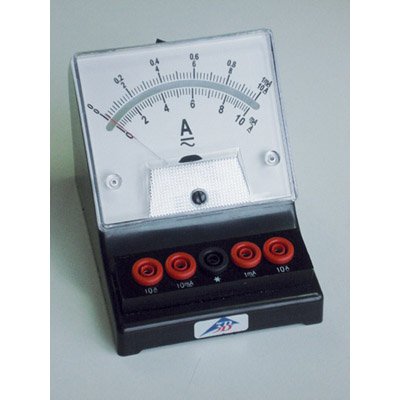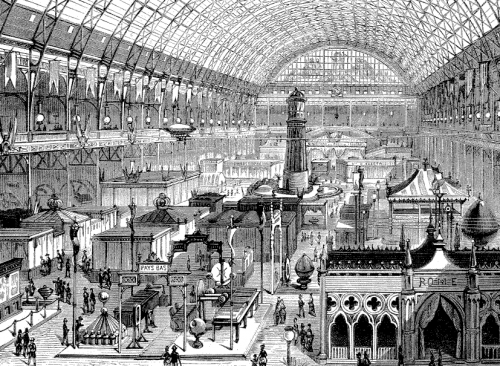Measurements - History of the Ampere

source
See also:
History of the Ampere
The notions of weight, time and distance have been known by humanity for many centuries.
The precise knowledge of electricity is more recent. Yes, some phenomenons such as electric shocks (delivered by catfish and electric rays) and static electricity have been observed for a long time, but up to the 17th century there were little more that curiosities. The word "electricity" comes from ἤλεκτρον (elektron) the Greek word for amber after a Latin word "electricus" coined by the English scientist William Gilbert.
Progress was slow during the 17th and 18th centuries. Up until the invention of the battery in 1800 by Volta and of electromagnetism in 1820 by Ørsted, there was no real way to measure the electrical notions of quantity of electricity, current and tension.
British Association for the Advancement of Science
In 1872, a committee of the British Association for the Advancement of Science (BAA, now known as the British Science Association), defined three theoretical electrical units: the "ohm" for resistance, the "volt" for electromotive force (tension) and the "weber" for intensity.
Members of the committee included some pretty well known scientists such as Lord Kelvin, James Clerk Maxwell and James Prescott Joule.
The unit of resistance they defined, however, was made 109 times larger than the CGS absolute unit of resistance. A unit of this size was needed because the size of the units that fell out of the electric equations in CGS units were much too small for everyday use.
The relationships between these three theoretical units were that 1 "weber" was the intensity of the current that circulates in a resistance of 1 "ohm" under the action of an electromotive force of 1" volt".
The idea of naming units after eminent scientists was due to Sir Charles Bright and Latimer Clark.
However, in other countries, such as France and Germany, different units were used, so there were no international electrical units.
First International Conference of Electricians
In 1881, under the patronage of Louis Adolphe Cochery the French Minister of Posts and Telegraphs, an international congress of "electricians" took place in Paris during the International Exposition of Electricity.
250 delegates from 28 different countries participated in the congress.

International Exposition of Electricity in Paris in 1881
source
One of the main goal of this congress was to decide on a common system of electrical units. Apparently, there was a big opposition between the British scientists that wanted the electrical units in the theoretical scope of mechanics and the German engineers who wanted practical standards.
Eventually, the British prevailed:
The conclusions of the congress could be summed up in seven points :
1° The CGS system was adopted.
2° The resistance unit will be designed by the name ohm with a value of 108 CGS unit.
3° The practical resistance unit (ohm) will be constituted by a column of mercury with one square millimetre section at the temperature of 0° centigrade.
4° An international committee will determine the length of the column of mercury representing one ohm.
5° The unit of current intensity will be called "ampere" : the current intensity generated by one volt in one ohm.
6° The quantity of electricity unit will be called "coulomb" or quantity of electricity produced by the current of one ampere for one second (according to the relation Q=I.t).
7° The capacity unit will be the "farad" defined by the condition that "one coulomb in one farad produces one volt" (according to the relation Q/C = V)
Ampère and Coulomb, as citizens of the inviting country, were honoured with the choice of their names for intensity and charge units.
The definition of the volt was such that the electromotive force of the Daniell cell would be about 1.0 volts.
The value of the ohm was later defined precisely in 1884 as
the resistance of a column of mercury of one square millimetre in section and 106 cm in length at the temperature of melting ice.
The ampere was defined as the current whose absolute value was 0.1 CGS electromagnetic unit.
The volt was the electromotive force which "supported" a one ampere current in a conductor whose resistance was the legal ohm.
Fourth International Conference of Electricians
In 1893, the Fourth International Conference of Electricians took place in Chicago.
Some of the units, in particular the ampere, defined in 1881 were not very practical, so new "workable" definitions were needed.
The international ampere were redefined as
the current that will deposit 0,00118 grammes of silver par second on the cathode of a silver nitrate electrolyser.
General Conference on Weights and Measures (1948)
In 1948, the General Conference on Weights and Measures (CGPM redefined the ampere:
The ampere is that constant current which, if maintained in two straight parallel conductors of infinite length, of negligible circular cross-section, and placed one meter apart in vacuum, would produce between these conductors a force equal to 2×10−7 newton per metre of length.
This still is the current definition in the International System of Units.
All other electrical units are derived from the ampere and the other units (metre, kilogram, second).
The definition of the newton is:
- One newton is the force needed to accelerate one kilogram of mass at the rate of one metre per second squared in direction of the applied force.
So, through the newton, the value of the ampere is dependent on the value of the kilogram, which is the only international unit that is based on a physical prototype.
Sources:
- https://en.wikipedia.org/wiki/Electricity
- http://seaus.free.fr/spip.php?article964
- https://sizes.com/units/ampHist.htm
- http://www.aticourses.com/international_system_units.htm
- https://en.wikipedia.org/wiki/Ampere

Great post @vcelier, really interesting scientific history information.
Thank you @justtryme90